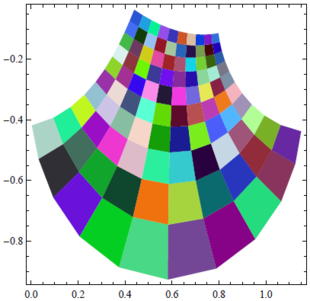Welcome to Math 240!
(additions to this web site no longer count towards good deed points)
|
| #
|
Week of...
|
Notes and Links
|
| 1
|
Sep 8
|
About This Class, What is this class about? (PDF, HTML), Monday, Wednesday
|
| 2
|
Sep 15
|
HW1, Monday, Wednesday, TheComplexField.pdf,HW1_solutions.pdf
|
| 3
|
Sep 22
|
HW2, Class Photo, Monday, Wednesday, HW2_solutions.pdf
|
| 4
|
Sep 29
|
HW3, Wednesday, Tutorial, HW3_solutions.pdf
|
| 5
|
Oct 6
|
HW4, Monday, Wednesday, Tutorial, HW4_solutions.pdf
|
| 6
|
Oct 13
|
No Monday class (Thanksgiving), Wednesday, Tutorial
|
| 7
|
Oct 20
|
HW5, Term Test at tutorials on Tuesday, Wednesday
|
| 8
|
Oct 27
|
HW6, Monday, Why LinAlg?, Wednesday, Tutorial
|
| 9
|
Nov 3
|
Monday is the last day to drop this class, HW7, Monday, Wednesday, Tutorial
|
| 10
|
Nov 10
|
HW8, Monday, Tutorial
|
| 11
|
Nov 17
|
Monday-Tuesday is UofT November break
|
| 12
|
Nov 24
|
HW9
|
| 13
|
Dec 1
|
Wednesday is a "makeup Monday"! End-of-Course Schedule, Tutorial
|
| F
|
Dec 8
|
The Final Exam
|
| Register of Good Deeds
|

Add your name / see who's in!
|

|
|
Boris
Be Efficient
By this point in the course, we become good at solving systems of linear equations. However, we should not use this same old problem-solving strategy over and over if a more efficient one exists. Consider the following problems:
Q1: Determine if  is linearly independent in
is linearly independent in  .
.
We can solve this linear equation to find the answer:
 where
where  .
.
Yet there is a less time-consuming approach that relies on two observations:
- (1) The dimension of
 is
is  so the size of a basis is also
so the size of a basis is also  .
.
- (2) No linearly independent set can have more vectors than a generating set (by the Replacement Theorem).
Since a basis is a generating set and the size of  is
is  , then the Replacement Theorem tells us that
, then the Replacement Theorem tells us that
 cannot be linearly independent. Hence, the problem can be solved without solving any linear equations.
cannot be linearly independent. Hence, the problem can be solved without solving any linear equations.
Q2: Determine if the polynomials  generate
generate  .
.
Once again, we can solve a linear equation but we do not have to. Observe:
- (1) The dimension
 is
is  so the size of a basis is also
so the size of a basis is also  .
.
- (2) No generating set can have fewer vectors than a basis (by a Corollary to the Replacement Theorem).
Since there are only  polynomials, then the Corollary tells us that it cannot generate
polynomials, then the Corollary tells us that it cannot generate  . Once again, we used a more efficient strategy.
. Once again, we used a more efficient strategy.
Extending a Linearly Independent Set to a Basis
Boris's tip (for concrete sets and vector spaces only):
If a problem requires us to extend a linearly independent set to a basis, then the easiest approach is to add vectors from the
standard ordered basis. Here is an example:
Let  be a linearly independent subset of
be a linearly independent subset of  . To extend
. To extend  to a basis, add vectors from
to a basis, add vectors from  . The only question is which vector(s) should we add?
. The only question is which vector(s) should we add?
We see that both vectors in  have a
have a  as the third component so a safe choice is to add
as the third component so a safe choice is to add  . Since
. Since  has a dimension of
has a dimension of  , then
, then  is a basis of
is a basis of  .
.
Nikita















